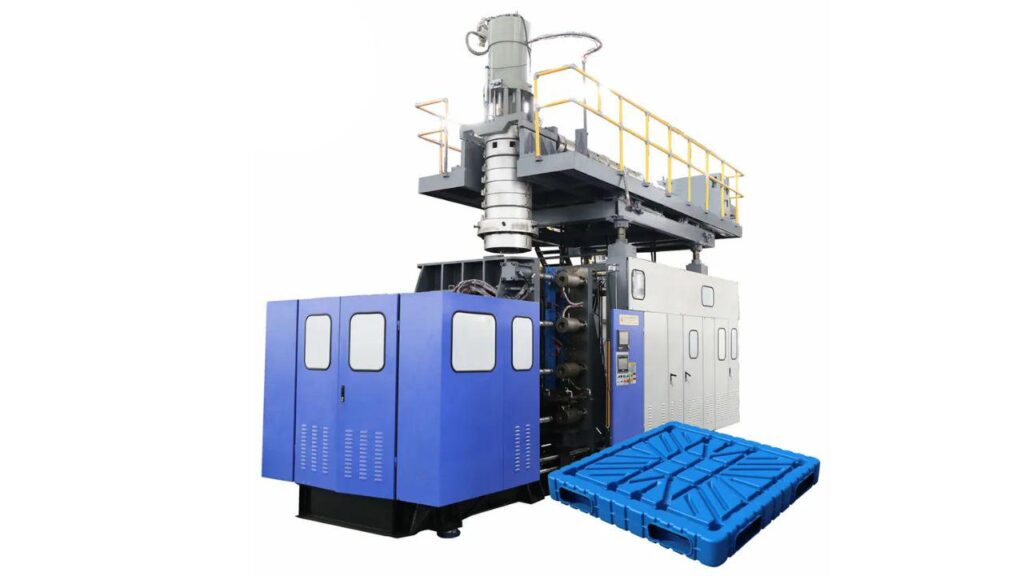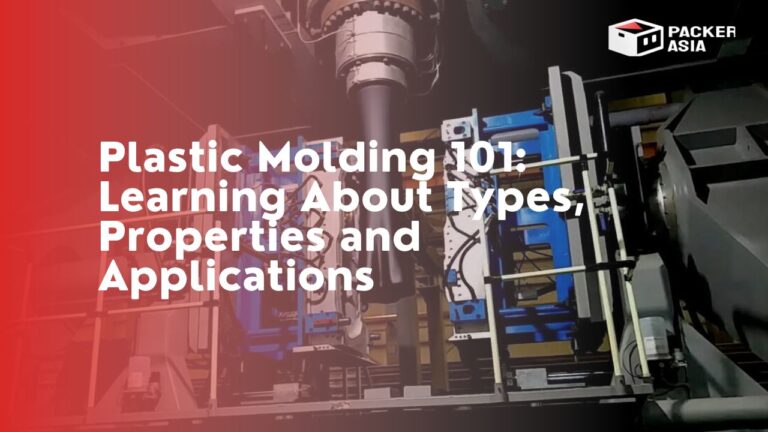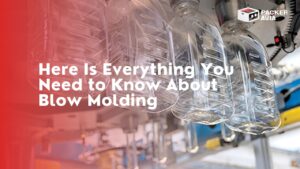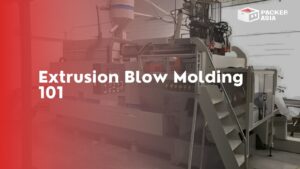Plastic molding is a versatile manufacturing technique that creates a wide range of plastic products.
Among the different plastic molding methods, injection molding is one of the most popular and effective.
In this article, we will look at the plastic injection molding process and provide an overview of other molding techniques, including blow molding, compression molding, extrusion molding, and rotational molding.

The Plastic Injection Molding Process
Plastic injection molding is a highly efficient process that involves injecting molten plastic into a mold cavity under high pressure.
The plastic is allowed to cool and solidify, after which the mold opens, and the finished product is ejected. This technique is ideal for producing complex and detailed plastic parts with high accuracy and repeatability.
The steps involved in plastic injection molding include clamping, injection, dwelling, cooling, mold opening, and ejection. It is widely used in various industries, including automotive, consumer goods, electronics, and medical.
Different Styles of Plastic Molding
To suit diverse industry needs, there are several other types of plastic molding available, each offering unique features and benefits.
An application’s particular specifications and requirements will determine which type of molding process is best-suited for a specific part.
Below are a few of the most common different styles of plastic molding.
Blow Molding:
Blow molding is a popular method for producing hollow plastic products, making it ideal for items such as bottles, containers, and various other hollow shapes.
The process begins with a heated plastic parison, a hollow tube, which is placed inside a mold.
Compressed air is then blown into the parison, causing it to expand and take the shape of the mold. This technique provides exceptional design flexibility, enabling manufacturers to create complex shapes with ease.
Blow molding is widely used in the packaging industry due to its ability to mass-produce cost-effective, lightweight, and durable containers for food, beverages, and household products.
Packerasia is a leading manufacturer of blow molding machines in China, we have a wide range of blow molding machines including: High Speed PET Blow Molding Machine, Automatic Economic Blow Molding machine, Big Bottle Blow Molding Machine, Semi Automatic Blow Molding Machine.
Contact us to find the right blow molding machine for your product.
Compression Molding:
Compression molding involves placing a heated plastic material into a mold cavity and applying pressure to compress it into the desired shape.
This method is particularly suitable for producing large and intricate parts that require excellent strength and surface finish.
During compression molding, the plastic material is heated until it becomes soft and pliable. It is then placed into the mold, where pressure is applied to shape the material into the desired form.
Compression molding is commonly used for manufacturing components in the automotive, aerospace, and electrical industries, where durability and precision are crucial.
Extrusion Molding:
Extrusion molding is a continuous process used to create long shapes with a uniform cross-section, such as pipes, tubing, and sheeting.
The plastic material is fed into an extruder, where it is heated and forced through a die to obtain the desired shape.
The resulting product is then cooled and cut to the desired length. This method is highly efficient for mass-producing plastic products with consistent dimensions.
Extrusion molding finds extensive use in construction, plumbing, and packaging industries, providing an economical solution for creating various plastic profiles.
Injection Molding:
Injection molding is a versatile and cost-effective method capable of producing a wide variety of plastic products. It involves injecting molten plastic into a mold cavity under high pressure. Once the plastic cools and solidifies, the mold opens, and the finished product is ejected.
Injection molding is well-suited for high-volume production and the creation of complex geometries with precise dimensions.
This process is widely utilized across multiple industries, including automotive, electronics, medical, and consumer goods. From intricate parts to everyday items, injection molding offers exceptional precision and repeatability.
Rotational Molding:
Rotational molding, also known as rotomolding, is a specialized technique for creating large, seamless hollow plastic products.
The process starts by placing powdered plastic material inside a mold, which is then rotated around two perpendicular axes, ensuring an even coating of plastic on the interior surface.
The mold is heated to melt the plastic, and as it rotates, the plastic adheres to the mold’s walls, forming a uniform wall thickness.
Rotational molding is commonly used for manufacturing products such as storage tanks, playground equipment, furniture, and outdoor recreational items.
Its ability to produce seamless structures and durable products makes it ideal for items that require strength and reliability.
In the vast world of plastic molding, each technique offers its unique advantages, enabling manufacturers to cater to diverse industry needs.
From the versatility of injection molding to the cost-effectiveness of extrusion molding and the creativity of blow molding, these methods continue to shape our modern world.
Whether you need intricate automotive components, durable storage tanks, or everyday plastic products, the various styles of plastic molding provide reliable solutions.
Embrace the versatility of plastic molding and explore the endless possibilities it offers for bringing innovative and functional plastic products to life.
Want to learn more?
Interested in learning more about injection molding or blow molding?
Our website offers a wide variety of specialized information on injection molding and blow molding, providing an in-depth look at the injection molding process.
Feel free to explore our site and learn about the differences between these molding technologies.
This will help you make an informed decision when choosing the most appropriate method for your project.
If you need expert assistance with injection molding or any other molding process, please feel free to contact us.
FAQs
What are the key steps in the plastic injection molding process?
The plastic injection molding process involves clamping the mold, injecting molten plastic, dwelling for cooling, opening the mold, and ejecting the finished product.
What are the advantages of plastic injection molding?
Plastic injection molding offers high precision, repeatability, and cost-effectiveness, making it suitable for mass production and complex designs.
What products are commonly made through blow molding?
Blow molding is commonly used to manufacture bottles, containers, jars, and various hollow shapes for the packaging industry.
What are the benefits of rotational molding?
Rotational molding is ideal for producing large, seamless products with uniform wall thickness, providing durability and design flexibility.
Is plastic injection molding suitable for small-scale production?
While injection molding is efficient for high-volume production, it can also be adapted for small-scale production runs with the right equipment and processes.
How can I download the eBook on plastic injection molding?
You can access our eBook on plastic injection molding by visiting our company website and following the download instructions provided there.




